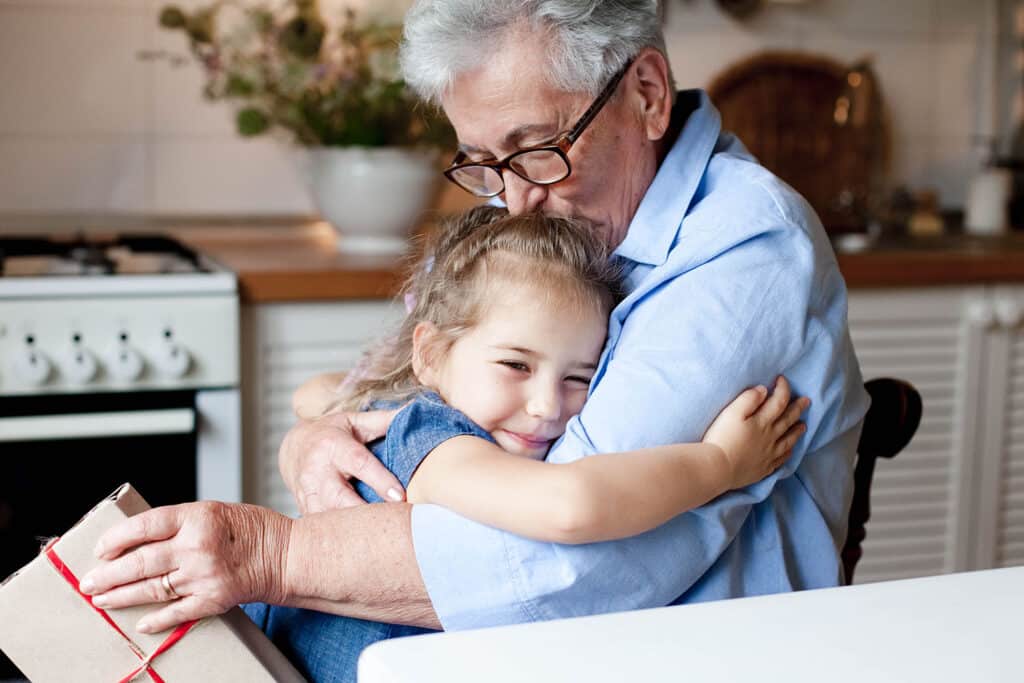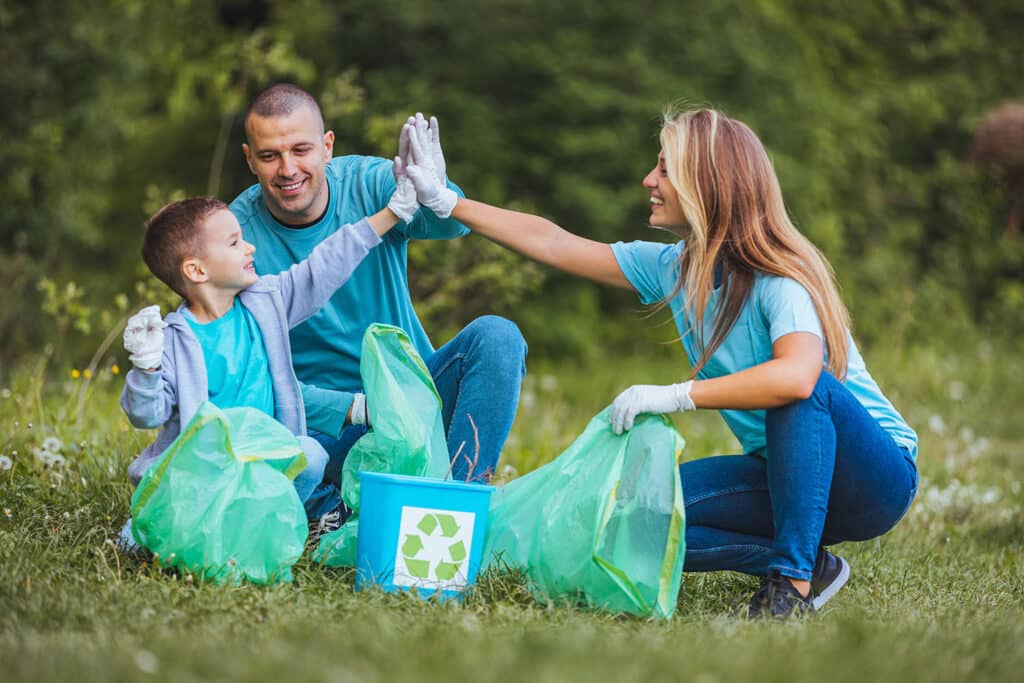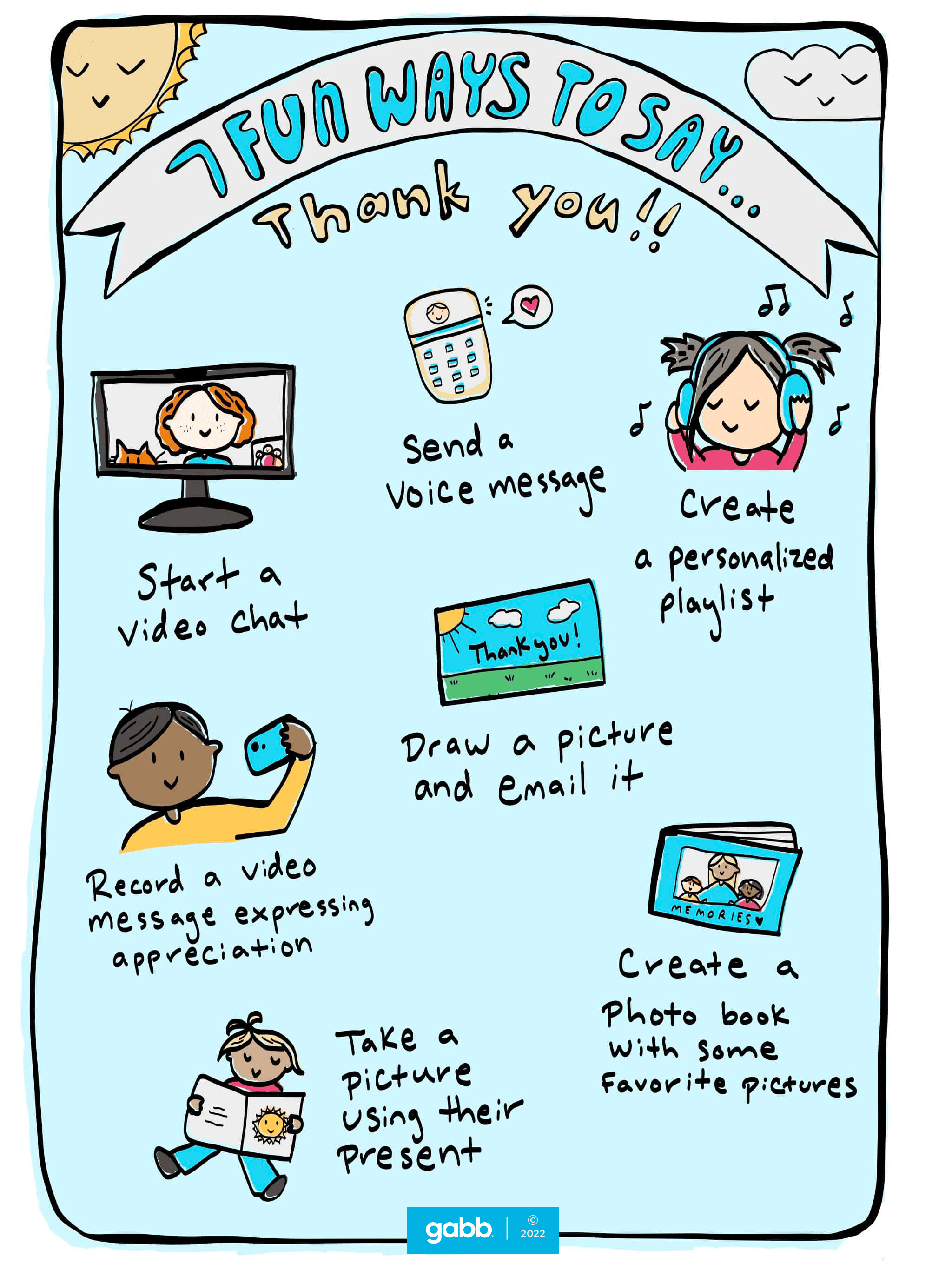This is the season when expressing gratitude is top of mind. We can show our children how to cultivate this attitude of gratitude and notice the difference it will have on their wellbeing, contentment, and confidence.
Appreciation and gratitude are often used interchangeably. Gratitude is a feeling, while appreciation is acting on that feeling.
The Raising Grateful Children project at UNC Chapel Hill explored gratitude as children matured from kindergarteners to young teens. Based on researchers’ observations, they concluded that we can teach our children gratitude by following a four-part model: 4
We all hope to raise children who recognize the good things in their lives. We can model these traits when we show gratitude.

Benefits of Being Thankful
Great things come from gratitude. Studies have shown that people who express or feel gratitude are happier, healthier, work through adversity, and build stronger relationships. 1
Next to physical survival, the greatest need of a human being is psychological survival—to be understood, to be affirmed, to be validated, to be appreciated.
-Stephen R. Covey
Contentment
We can share with our children that a thankful heart is a happy heart. When we’re happy, there’s a decrease in the tendency to compare ourselves to others. We experience less resentment and envy. Our self-esteem increases and we are able to be a better version of ourselves, which leads us to be more productive and successful. 1
Emotional wellbeing
Kids will find it useful to know that gratitude can decrease symptoms of depression and anxiety. 8 In a study, participants’ cortisol levels—the stress hormone—decreased when they felt grateful. 2 These individuals were more resilient to hardships and handled adversity better than others.
When we appreciate what we have, we rewire our brains to look for the good in each situation and broaden our perspective. 1 Gratitude does amazing things—it boosts serotonin and prompts the brain to create more dopamine, our brain’s pleasure chemical. This makes us happier.

Social relationships
We can model for our kids how to acknowledge our friends’ positive contributions to our lives. We can teach our children to notice how our friends feel valued and loved.
Children will see how this leads to friends having positive feelings about us. 7 Our relationships are strengthened (or formed!) as a result. When we form healthy friendships through appreciation, our friends are more likely to help us in the future and be mindful of our feelings.
Academic performance
Kids who are grateful are more likely to see academic success. Expressing gratitude makes us more optimistic. This change in attitude allows students to believe in themselves and have a growth mindset—the belief that they can overcome challenges with hard work. 3
Studies show that kids who are thankful have better grades, perform better on tests, and participate in extracurricular activities. 3 These activities are not only beneficial for social, physical, and emotional health, they also prepare kids to be successful and strengthen college applications.
Health
Grateful kids are less likely to experiment with drugs or practice risky sexual behaviors. They are also able to use coping skills learned through gratitude to deal with everyday stressors. 3
Researchers examined three groups of people who were asked to keep a weekly journal. The first group wrote down things they were grateful for, the second group journaled things that irritated them, and the third simply wrote down the things that happened to them.
At the end of ten weeks, the first group was not only happier and more optimistic, they also exercised more, had fewer visits to the doctor, and 16% reported reduced pain symptoms. 1
Practicing appreciation decreases risk of diseases and chronic pain difficulties. It improves sleep, immunity and overall mood. 8 The benefits seem endless, and thanks to technology there are more ways to show gratitude than ever before.

Using Technology to Say Thanks
We can show our children how they can use technology to show gratitude. We can help them send a quick text or email, a picture they have drawn, or record a video message expressing appreciation. Technology gives all kids—introverts and extroverts—freedom to express their gratitude in whatever way they feel most comfortable.

Teaching Children Gratitude
Just as the saying goes, actions speak louder than words. We can point out generosity when we see it, and express gratitude when something deserves appreciation. Children are observant and will learn from our example. To get started, consider the Mayo Clinic’s free virtual gratitude program. It’s a month-long endeavor appropriate for children and adults, and is designed to improve our health and well-being.
Share struggles and look for the good each day
Certainly, we all experience tough times individually and as a family. It’s important to be honest and vulnerable with our children as they learn how to manage challenges. When they see us moving through tough times with gratitude, it inspires confidence in their own ability to meet life’s challenges.
Parents can share what makes them content and ask kids what they feel grateful for. Some families choose to do this on car rides, during bedtime, or at the dinner table.
We can encourage our kids to keep a gratitude journal from a young age. On hard days, reading over past entries will help them remember that they’ve conquered difficulties and have had help along the way.
Serve
We can show our children that serving others is important and brings us joy. Not only will this teach kids to look out for others, they will learn empathy and appreciation for those around them. Small acts of kindness go a long way.
Some great resources for finding local service opportunities are serve.gov, justserve.org, and volunteermatch.org. Choose a cause that is dear to your heart or find a charity to support as a family.
Find more articles to uplift your family on our blog.
References
- [1] Madhuleena Roy Chowdhury. Apr 9, 2019. Positive Psychology. The Neuroscience of Gratitude and Effects on the Brain. Retrieved Oct 11, 2022, from https://positivepsychology.com/neuroscience-of-gratitude/
- [2] McCraty, R., & Childre, D. (2004). The Grateful Heart: The Psychophysiology of Appreciation. In R. A. Emmons & M. E. McCullough (Eds.), The psychology of gratitude (pp. 230–255). Oxford University Press. Retrieved Oct 11, 2022, from https://psycnet.apa.org/record/2004-00298-012
- [3] Emily Campbell. Nov 18, 2013. Greater Good Magazine. Grateful Schools, Happy Schools. Retrieved Oct 11, 2022, from https://greatergood.berkeley.edu/article/item/grateful_schools_happy_schools
- [4] Andrea Hussong. Nov 21, 2017. Greater Good Magazine. What Parents Neglect to Teach About Gratitude. Retrieved Oct 11, 2022, from https://greatergood.berkeley.edu/article/item/what_parents_neglect_to_teach_about_gratitude
- [5] https://www.health.harvard.edu/healthbeat/giving-thanks-can-make-you-happier
- [6] Zahn, R., Moll, J., Paiva, M., Garrido, G., Krueger, F., Huey, E. D., & Grafman, J. (2008). The Neural Basis of Human Social Values: Evidence from Functional MRI. Cerebral Cortex, 19(2), 276–283. https://doi.org/10.1093/cercor/bhn080
- [7] https://greatergood.berkeley.edu/article/item/how_gratitude_helps_your_friendships_grow
- [8] Can expressing gratitude improve your mental, physical health? (2022, August 25). Retrieved October 31, 2022, from https://www.mayoclinichealthsystem.org/hometown-health/speaking-of-health/can-expressing-gratitude-improve-health









Success!
Your comment has been submitted for review! We will notify you when it has been approved and posted!
Thank you!